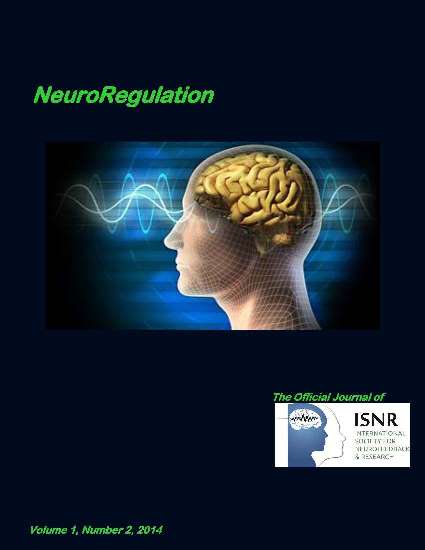Determination of the Effects of Neurofeedback Training in the Neuropsychological Rehabilitation in Inattentive and Combined Subtypes of Attention Deficit/Hyperactivity Disorder
DOI:
https://doi.org/10.15540/nr.1.2.131Keywords:
neurofeedback, attention-deficit/hyperactivity disorder, combined subtype, predominantly inattentive subtypeAbstract
Introduction: The aim of the present study was to compare the effect of neurofeedback in neuropsychological rehabilitation of attention in children with combined (C) and predominantly inattentive (IA) subtypes of ADHD. Method: This research is a quasi-experimental study by which, from among 7–12 year old children referred to the Atiyeh Psychiatric Center, 30 children diagnosed with either Combined or predominantly Inattentive subtypes of ADHD (15 children in each subtype) underwent 30 sessions (3 sessions per week) of neurofeedback therapy. For assessing children's cognitive performance, the children in both treatment groups were administered before and after treatment with a time interval of 10 weeks, both the visual and auditory continuous performance tests (IVA). Patient diagnosis for assignment to either of two ADHD subtypes was carried out with the Conner’s rating scale, a Clinical Interview Checklist, and Psychiatrist evaluation. Results: Neurofeedback training significantly increased all IVA subscales scores, with the exception of the Balance scale, in all subjects, regardless of treatment group (subtype). Results of MANOVA analysis indicated that the two subtypes did not differ in terms of effectiveness of neurofeedback training with the exception of the Readiness scale. Conclusion: The present findings supported the efficacy of Neurofeedback training in increasing children’s scores on the IVA-CPS battery of tests, regardless of subtype classification. These findings are interpreted within recent theoretical and developments regarding the validity of subtypes and the usefulness of a dimensional approach.Downloads
Published
2014-11-21
Issue
Section
Research Papers
License
Authors who publish with this journal agree to the following terms:- Authors retain copyright and grant the journal right of first publication with the work simultaneously licensed under a Creative Commons Attribution License (CC-BY) that allows others to share the work with an acknowledgement of the work's authorship and initial publication in this journal.
- Authors are able to enter into separate, additional contractual arrangements for the non-exclusive distribution of the journal's published version of the work (e.g., post it to an institutional repository or publish it in a book), with an acknowledgement of its initial publication in this journal.
- Authors are permitted and encouraged to post their work online (e.g., in institutional repositories or on their website) prior to and during the submission process, as it can lead to productive exchanges, as well as earlier and greater citation of published work (See The Effect of Open Access).











